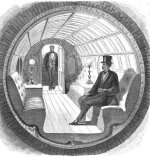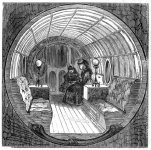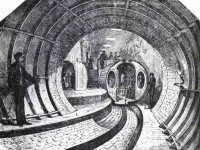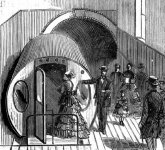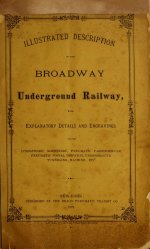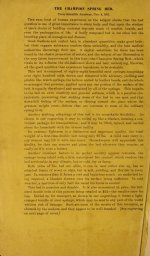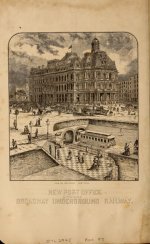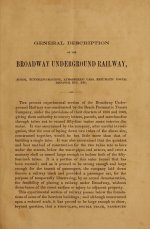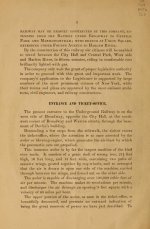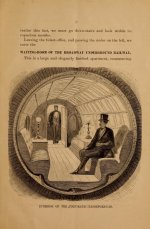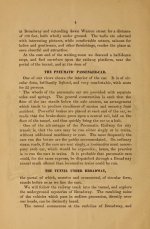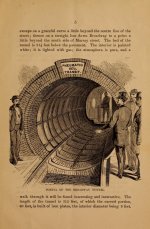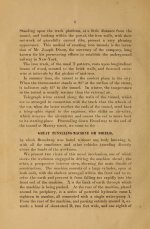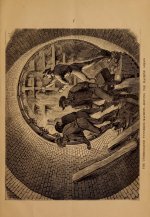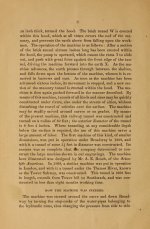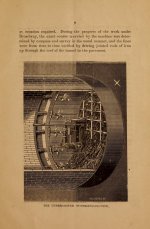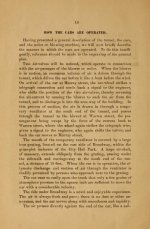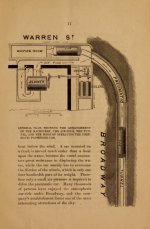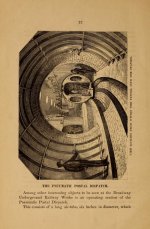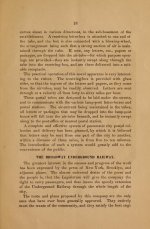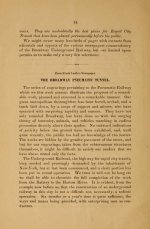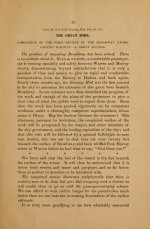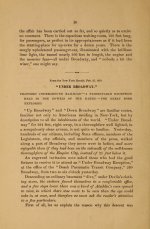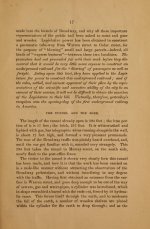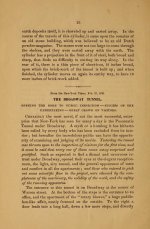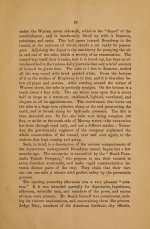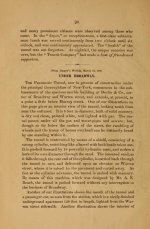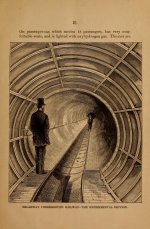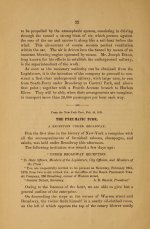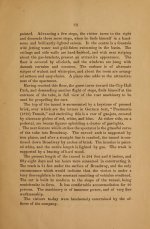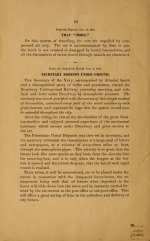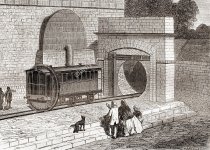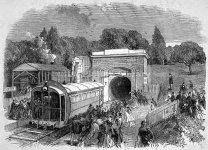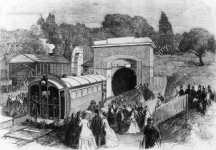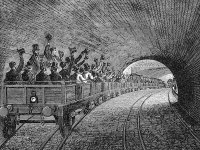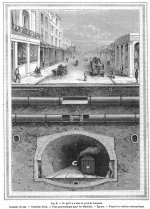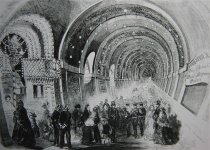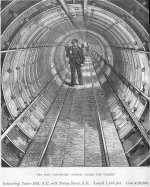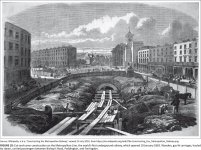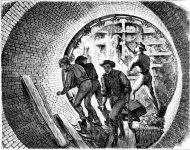- In 1799, inventor George Medhurst proposed an idea to move goods through cast-iron pipes using air pressure. In 1844, he built a railway station (for passenger carriages) in London that relied on pneumatics until 1847.
Throughout the mid-1850s, several more pneumatic railways were built in Dublin, London, and Paris. The London Pneumatic Despatch system was meant to transport parcels, but it was large enough to carry people, too.
- To mark its opening, the Duke of Buckingham traveled through it in 1865.
- KD: It even sounds childish. It's almost like they found it and... dude, check it out, we can fit in there. Let's ride...
Judging by the image below, there could have been a similar system in the United States. Today we run delivery trucks, vans and other postal service vehicles. In 1860s they ran a hyperloop to deliver mail.
This information is not a secret, though not too many people are aware of this "ahead of its time" achievement. And here we are, 150 years later, and still not smart enough to implement this technology in the 21st century. All projects were shut down for various financial reasons, and lack of political backing at the time. But was it really the financial profitability reason, or the brightest minds of the 19th century were simply unable to re-launch a technology which survived the collapse of the previous spin of our civilization? The same previous civilization I have been talking about for a while now. The civilization comparable to our level of technical development and in many instances far superior to ours. The civilization that was wiped out, and the one I will attempt to elaborate on in my other articles.
1843 Dalkey Atmospheric Railway
The Dalkey Atmospheric Railway (unofficial opening 19 August 1843, official opening 29 March 1844 – 12 April 1854) was an extension of the Dublin and Kingstown Railway (D&KR) to Atmospheric Road in Dalkey, Ireland. It was the first commercial railway of its type in the world.The New York City Subway (conventional, what we have today) was introduced in 1904. That is some 37 years after the Beach Pneumatic Transit. As far as I understand, this here is only the inspection. Actual train cars looked rather normal.
- Mayor George B. McClellan, front row center, and other city officials inspect the subway in 1904.
- As far as I understand, Mayor McClellan is second from the left. What's up with the face of the second from the right guy? Who was it supposed to be anyways?
- NYT Source
Here is a different photograph where the bearded guy's face does not look painted over. Why did they have to mess with the image above?
I'm leaning towards some renovated older tunnels being used to run this 1904 subway.
1867 NYC Beach Pneumatic Transit
Let us take a look at what those 1867 Beach Pneumatic Transit train cars looked like. Unfortunately not too many photographs made it through time, but a few did. Supplemented by some 19th century wood engravings, it might give you an idea of what a huge step back we took in 1904.
Makes one wonder what gave movie Kingsman this idea below...
And here is what Crystal Palace pneumatic railway train looked like in 1864. Take a note of the similar engravings being different in reality. It does look like different moments in time.
Some of the images representing early days of the London Underground in 1863, show a very sharp contrast between the quality of the tunnels and the trains running through them. Judge for yourselves what you see. Needless to say that this here is the version of our past promoted by the PTB
Below are some additional images from the London Underground system. They demonstrate an obvious technological mismatch between the general knowledge we have about the 19th century, and the supposed achievements and luxuries they actually had.
This is how all these tunnels were built, we are told. After 6 years of digging with $80,000,000 Bertha tunnel-boring machine, Seattle is still not done with its downtown tunnel (article was written in March 2018). But in 1860s they did it with... what exactly, a wheelbarrel and a shovel? Of course not, but they are not showing us the tech:
The below photo is very indicative of the way the vast majority of the so called 19th century building process photographs look like. To me it looks like they found a tunnel and trying to dig it out with whatever tools they have. There is no building process. The "new" construction looks like and old iron and brick structure. Yet it is described as:
Men at work: This photo by Henry Flather shows the construction, undertaken between 1866 and 1870, of the Metropolitan District Railway's underground lines which included the destruction of houses.
Where are the project documents, calculations, and convincing photo-proof of the construction progress? Or were they simply trying to restore the technology of the previous civilization? Could it be that they tried to launch, and failed to successfully do so? In the 19th century these tunnels already look old...
In my opinion this technology was not only beyond the technological level of the 19th century, it is beyond ours as well. Elon Musk's Hyperloop One is hoping to change that. As of March 2018 we still do not have hyperloop trains delivering passengers. 154 years ago pneumatic trains were transporting passengers in London, 151 years ago in New York. What do we really know, or better what do we not know about our history?
Also the below two photos represent the same object. Both are extremely old. One shows a working pneumatic car, the other one shows extremely old remains of the pneumatic car stuck in the tunnel. The state of the tunnel is also very telling. When were these two photos really taken? Makes me wonder what the time separation between the two could be.
Below we have an example of the chronological mismatch where alleged achievements do not match the technology claimed by the PTB narrative. We have the same issue with these 19th century pneumatic/atmospheric subways.
KD: Our recent past holds secrets beyond our wildest imagination; of that I have no doubts. Unfortunately, our judgement is clouded by the institutional tunnel-type education, where any deviation from the accepted dogma is being laughed at and ridiculed. But it is so much easier to trust your own eyes, as opposed to some commonly accepted non-sense.


